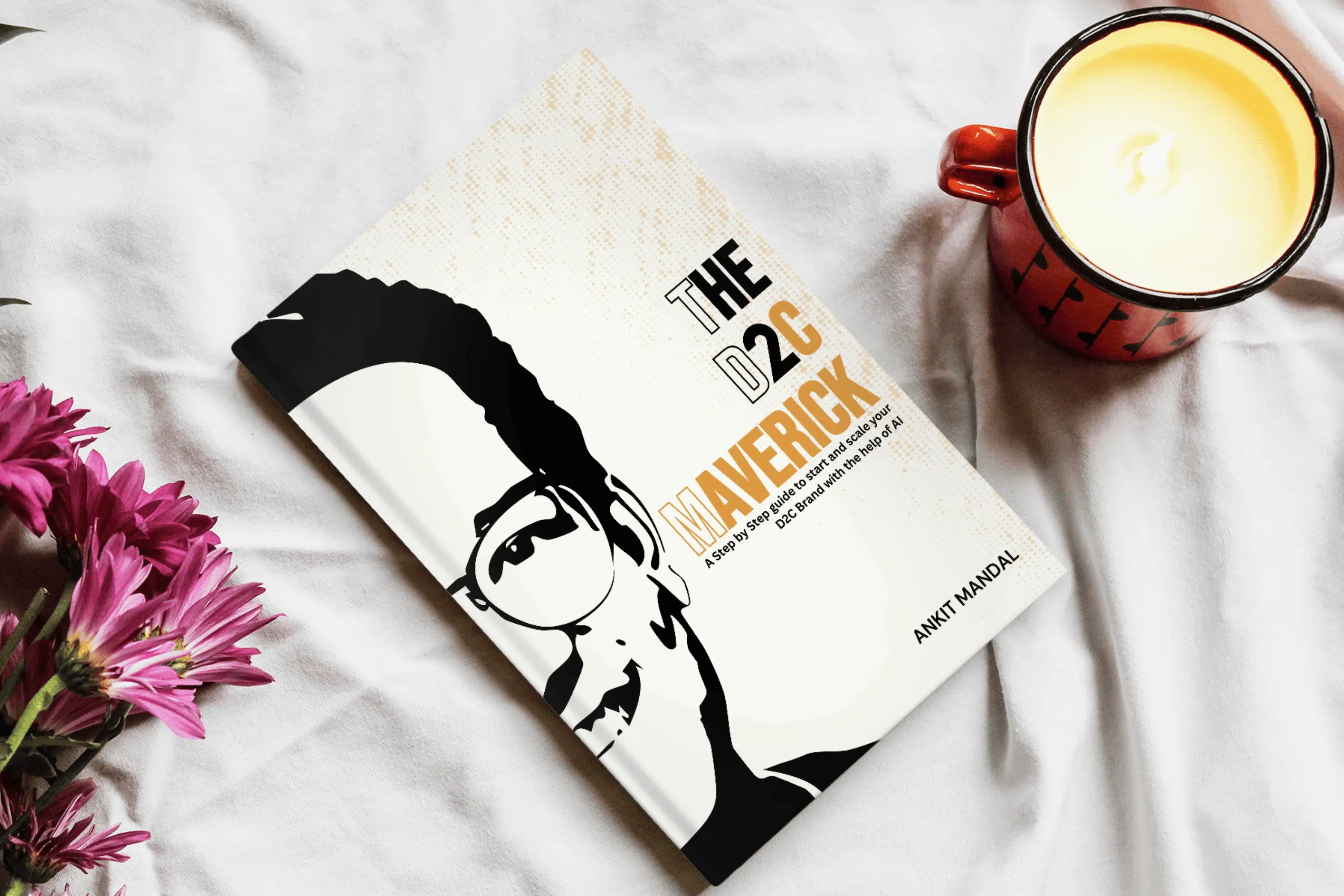How to Start a D2C or Ecommerce Business from Scratch. What is d2c business ? A D2C (direct-to-consumer) business is one where a brand sells its products straight to customers—typically online—bypassing wholesalers, distributors or retail middlemen. This model gives you: Starting a Direct-to-Consumer (D2C) model or an Ecommerce venture is a captivating experience full of possibilities and opportunities, albeit it can be a bit daunting. The good news is that this guide will help you find your product and build your brand step by step. Further, insights from The D2C Maverick alongside some business case studies will fuel inspiration on the rest of the way. Difference between D2C (Direct-to-Consumer) vs B2B (Business-to-Business) Characteristic D2C B2B Customer Individual consumers Other businesses or organizations Purchase volume Typically low (1–10 units) Often high (bulk orders) Sales cycle Short (days or weeks) Long (weeks to months) Decision-making One or two people Multiple stakeholders Pricing Fixed retail price Negotiated/custom pricing Marketing channels Social media, content, influencers Trade shows, account-based marketing Customer relationship Lively, community-focused, direct support Relationship-driven, dedicated account reps Margin structure Higher unit margin (no middlemen) Lower margin per unit, but volume offsets Distribution Shipped direct from brand’s warehouse Often via contract logistics, multiple touchpoints Examples Glossier, Warby Parker, Dollar Shave Club Salesforce, IBM, Grainger Essential Steps to start A d2c Business Step 1: Research—An Imperative Cornerstone All thriving D2C brands commence with detailed groundwork – this is where you begin. Product Research Start by looking for a product that meets certain consumer expectations. Try to identify emerging trends with Google Trends, Amazon’s Best Sellers List, or via social media. Case Study: An Indian company BoAt noticed the market was underserved with affordable and stylish audio accessories. By addressing the need, they grew rapidly. Tip from The D2C Maverick: “Always ensure your product genuinely adds value to your customer’s life.” Market Research Get to know the audience specifically, what are their purchase habits, needs, desired products, and how much they are willing to spend? Carry out surveys, review online discussions, and talk to people on social media. Real-world Example: Mamaearth strategically used the concern of young parents regarding safe products to design a trusted brand that is loved by millions. Competitor Research Look into your competitors to find some possible gaps. What is their strength, and which blind spots do you have? You could look into SEMrush and SimilarWeb for some brand-relevant data. Real-world Example: WOW Skin Science separated itself from the competition by promoting the purity and natural ingredients of their products, which was a key differentiator in their marketing strategy. Compliances Make sure you have the requisite licenses and registrations such as GST, Food FSSAI, or standards of BIS for your item category. Tip from ‘The D2C Maverick’: “Compliance isn’t just paperwork—it’s trust and credibility for your brand.” Pricing Strategy, Margin Calculation and Unit Economics Make sure that pricing for your products meets the market level while still making a profit. Determine your COGS, marketing, shipping, and overheads, so that you can set the margins profitably. Real-world Example: Sugar Cosmetics executed a well-balanced affordability and premium branding that captured the attention of a loyal customer base and strengthened their market presence. Step 2: Establishing the Business and Brand – Importance of Identity Choosing a Brand Name, Trademark, and Domain Select a brand name that is unique and relevant. Conduct trademark and domain name searches immediately. GoDaddy and Namecheap are useful in this regard. Real-world Example: Lenskart’s catchy name helped the company gain instant recognition and capture a significant share of the eyewear market. From ‘The D2C Maverick’ — “Your brand name should not be a hard to spell, pronounce or emotionally connect with.” Step 3: Brand Creation – Shaping Your Narrative Brand Story Craft and share a compelling brand story. The narrative needs to be authentic, focused on emotions that resonate with the audience and the human condition’s struggles and triumphs. Real-world Example: The relatability factor of the brand Sleepy Owl Coffee stemmed from the story behind it, where three friends transformed India’s coffee culture with their passion for great coffee by introducing cold brew to the market. Logo and Packaging Look for experts to design a logo and packaging that show your brand’s character. Maintain a visual identity as consumer perception is affected greatly by how they see the brand. Real-world Example: Paper Boat carries unique nostalgic packaging that is instantly recognizable , evoking emotion and connection with consumers. From ‘The D2C Maverick’: “Sterling branding can create a feeling of pride for customers aligning themselves with the product.” Setting Up an Online Store Your shop will serve as your digital storefront. An ecommerce site just like Shopify, WooCommerce, and Wix enables one to create an ecommerce site for visually appealing and functional sites. Real-world Example: Bewakoof.com mastered the art of engaging the millennials by enhancing their shopping experience with a user-friendly website. Social Media and Online Marketplaces Instagram, Facebook and LinkedIn can help in brand building. You can also use Amazon, Flipkart and Meesho to reach wider audience. Real-world Example: Plum used social media with great success to build community engagement and establish a presence in the market. Step 4: Marketing-Engaging Your Audience Your business is adored with effective marketing. Content Marketing Develop educational, engaging, and inspiring content around your goods and services to reach your audience. Blogs, videos, podcasts as well as email newsletters work perfectly. Real-world Example: Nykaa garnered consumers trust with beauty tutorials and review videos, establishing itself as a go-to guide. Influencer Marketing Partner with influencers that align with your brand and audience. Real-world Example: mCaffeine boosted its brand visibility dramatically through targeted influencer partnerships, connecting authentically with younger audiences. Tip from ‘The D2C Maverick’: “Influencers amplify your voice—choose wisely, align genuinely.” Performance Marketing Utilize Facebook Ads, Google Ads, and SEO strategies to drive traffic and conversions, ensuring measurable growth. Real-world Example: The Man Company significantly increased sales by optimizing ads through targeted Facebook campaigns, achieving a high ROI. About the Author: Meet ‘The D2C Maverick’
